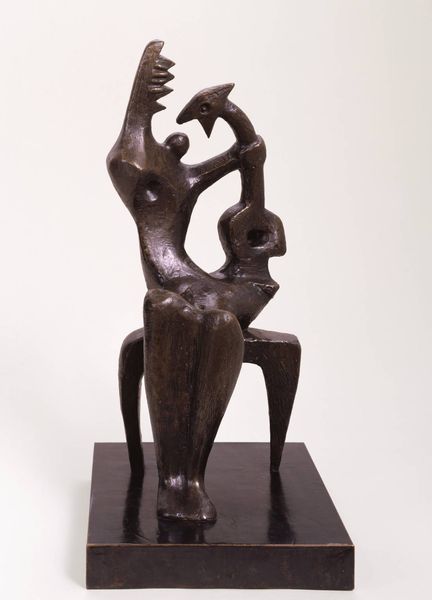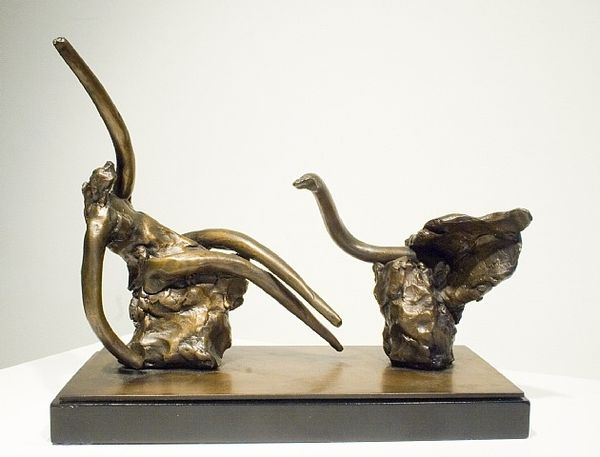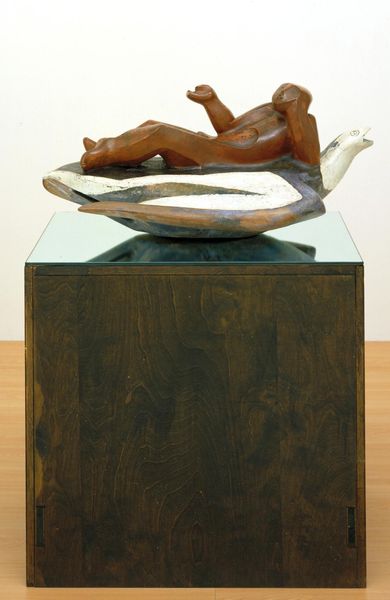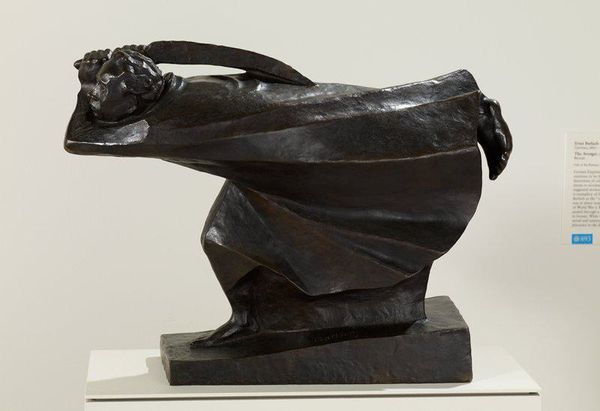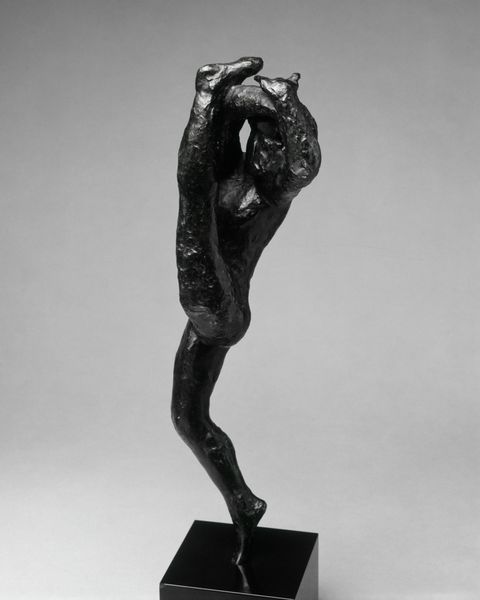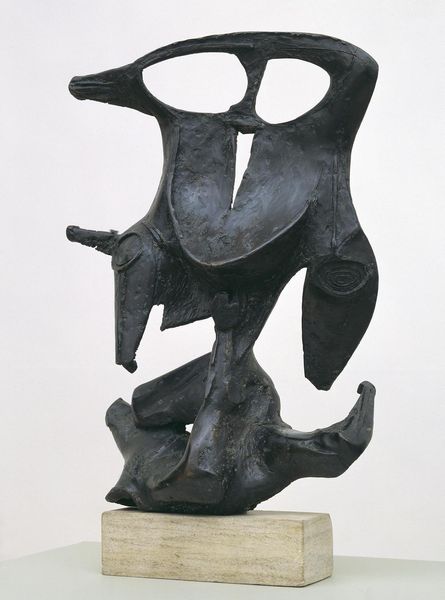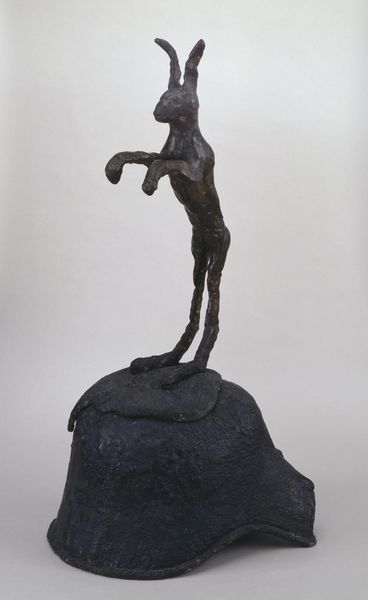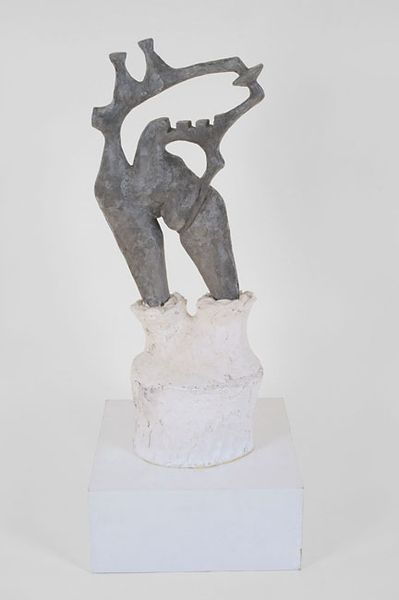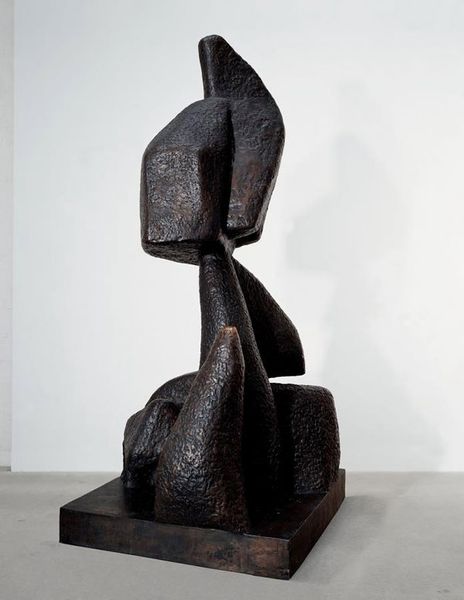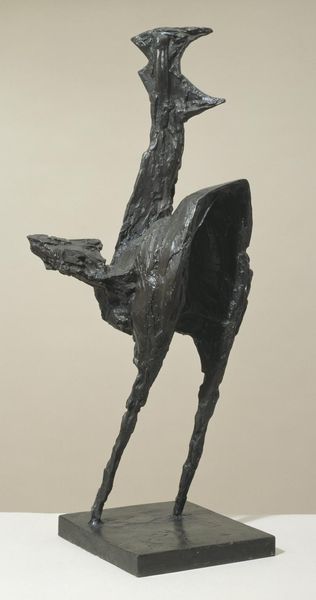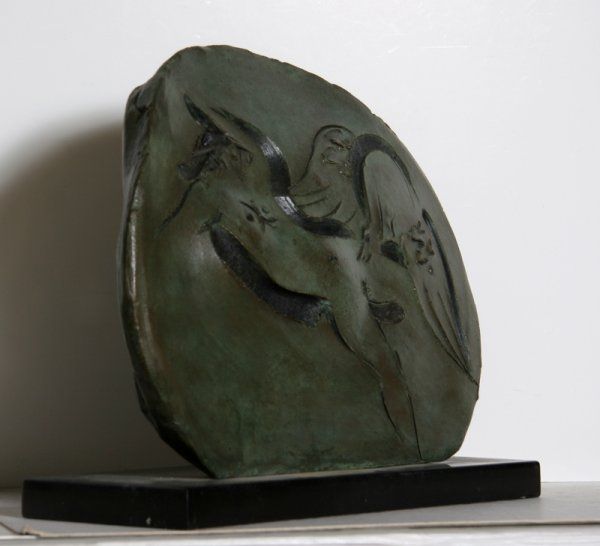
bronze, sculpture
#
abstract-expressionism
#
sculpture
#
bronze
#
figuration
#
sculpture
Copyright: Theodore Roszak,Fair Use
Curator: This bronze sculpture, created in 1946 by Theodore Roszak, is titled "Surge". What strikes you about it initially? Editor: There's an undeniable primal energy radiating from this sculpture; a raw, almost aggressive presence. The dark bronze, combined with its somewhat contorted form, feels almost monstrous. Curator: Roszak's techniques involved forging and hammering bronze, evident in the textured surface. Given the year, one might interpret its brutal character as a response to the socio-political context of post-war anxiety and nascent consumer culture. Editor: I see it. The abstracted figuration reads like some kind of fallen angel, or perhaps an Icarus plunging headfirst after flying too close to the sun. It carries that symbolic weight of hubris and failure, quite fitting for a period of societal reckoning. Curator: Interesting. Consider how the bronze itself embodies both decay and permanence. Roszak was consciously working against the polished perfection prized in much earlier sculpture. Instead, the roughness asserts a focus on the physicality of creation and how such material choices signal wider shifts in societal priorities around art production. Editor: Yes, the material certainly amplifies its symbolic impact. That rawness underscores the emotional turbulence—fear, disillusionment—bubbling beneath the surface after the war. This form of expressive figuration suggests a universal struggle against unseen forces, casting the viewer into that drama. Curator: Exactly. And in thinking about the labor invested in its construction, consider the implied critique of the increasing mechanization and perceived alienation of the modern workforce which may invite reflections on both the socio-economic as well as artistic process. Editor: So, by using these materials and methods, Roszak isn’t just depicting a subject, he's almost enacting or re-staging an emotional and existential drama using a new visual language. Curator: Precisely, that new language reconsiders what art should mean in the modern world and opens the artwork for complex conversations on its materiality and process. Editor: It certainly invites reflection far beyond its initial appearance. What seemed at first glance to be just a strange form, actually holds potent symbols of a generation grappling with the weight of history.
Comments
No comments
Be the first to comment and join the conversation on the ultimate creative platform.
